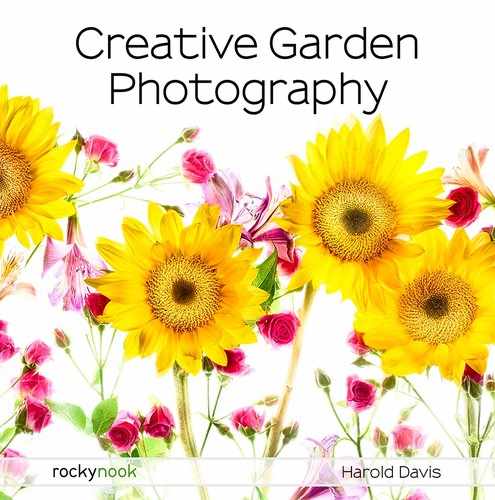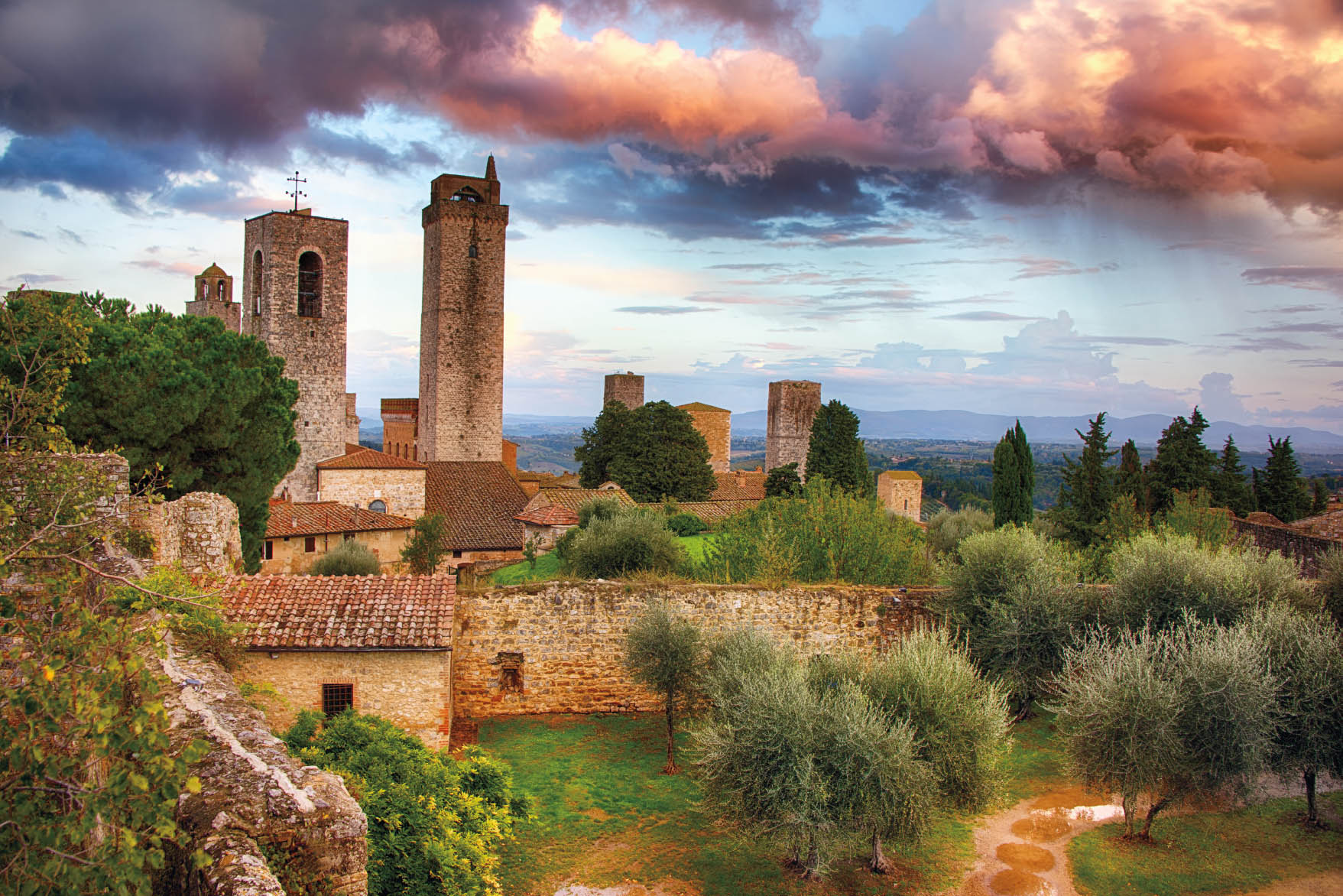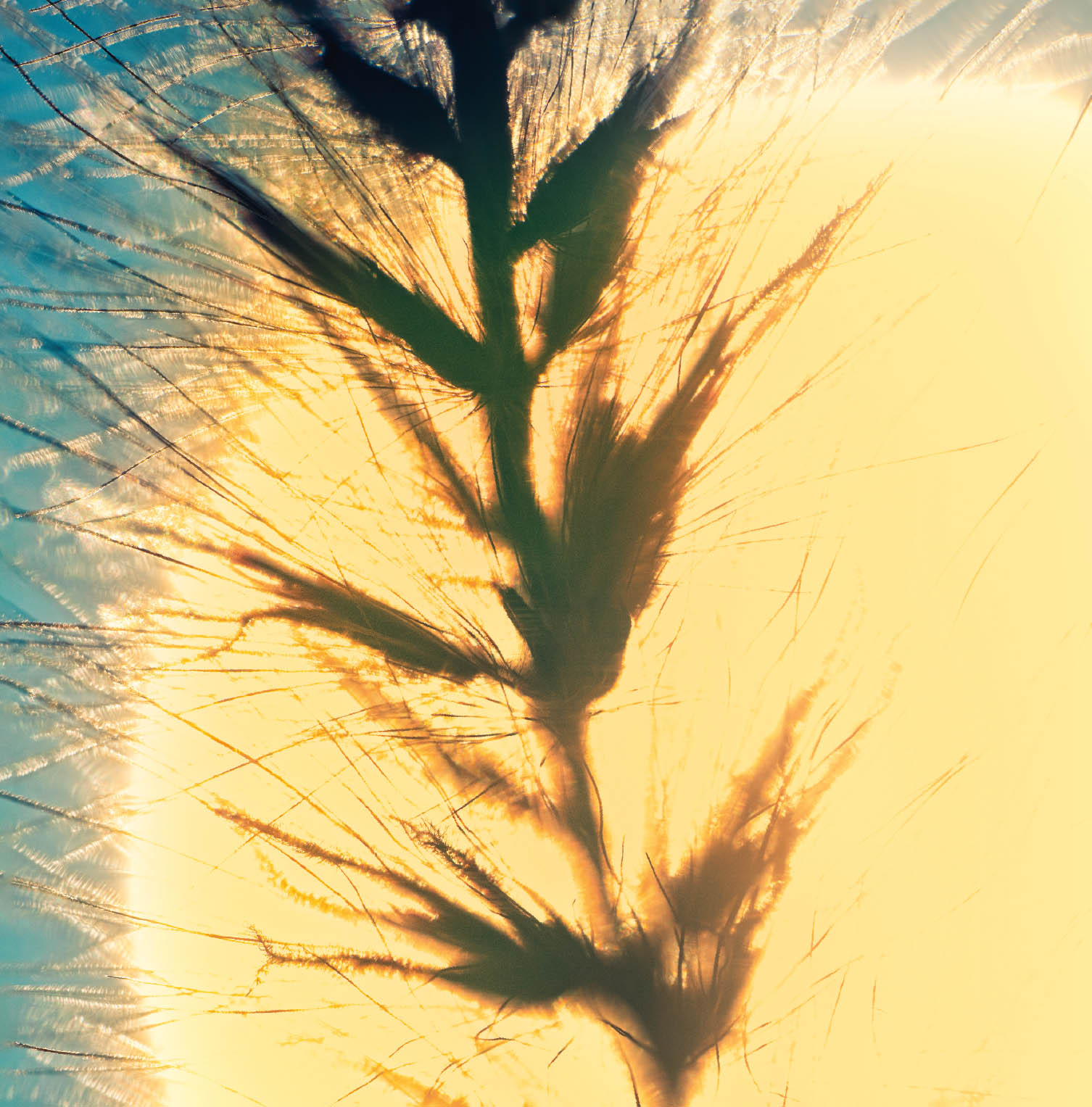Special Times for Lighting
I have often joked that landscape photographers need to be sentient and aware around sunrise and sunset. Otherwise, we could spend the entire middle of the day and not miss too much.
This, of course, is not entirely fair. Depending on the kind of weather, bright overcast in the middle of the day can create great diffuse lighting for garden photography. Nevertheless, photographers need to be particularly conscious of the light early and late in the day.
With sunrise, as dawn commences, light turns an attractive shade of blue. As the day progresses, light becomes golden. Finally, the sun comes up. Things stay golden for a little, and then become the bright full-on sun that we know.
Towers of San Gimignano—As I have noted, some gardens are built as status symbols (see pages 44–47). At other times and places, status has been measured by camels, carpets, or the length of the tail fin on one’s car. In San Gimignano in Tuscany, Italy, status for minor nobility depended on the height of the towers that they built, although by statute toward the end of the medieval period, towers were limited to the height of the Palazzo Comunale (its tower was roughly 230 feet tall). Many of the seventy-two historical towers in San Gimignano are still standing.
On the late afternoon of a rainy day in Tuscany, I found myself on a hillside vineyard overlooking San Gimignano. As it became clear that there might be a break in the clouds, I raced into the old medieval town and found a high perch where I made this image showing battlements, a cloistered garden, and the sunset clouds heavy with rain.
Nikon D810, 28mm, eight exposures taken at shutter speeds ranging from 1/125 of a second to 4/5 of a second, each exposure at f/8 and ISO 64, tripod mounted.
Solar Flare—The sun was setting quickly as I wandered with my camera. I framed some decorative grass and focused close with my macro lens wide open (at f/2.8) to make the setting sun large and magnificent in the image.
Nikon D850, 85mm Lensbaby Velvet macro, 1/8000 of a second at f/2.8 and ISO 200, hand held.
Sunset reverses this process. As the sun begins to set, colors become saturated, and light becomes golden. Light stays golden shortly after the sun goes down, and then turns a wonderful opalescent blue. Eventually, everything becomes dark.
Of course, this picture of lighting will vary depending upon many things including place, time of year, and cloud cover. The sunset progression is, in fact, longer than the sunrise progression.
This lighting is so special that we have names for it: blue hour and golden hour. Both times and kinds of lighting are worth paying special attention to. In particular, blue hour in the evening lasts far longer from the camera’s viewpoint than is apparent to our naked eyes.
The rubber meets the road when the photographer combines awareness of the special times of lighting with the ability to positionally track a photographic subject. Some of this can be seat-of-the-pants: One observes the light changing for sunrise or sunset and gets to a place that would be great for a photograph under the observed conditions.
But there’s also a lot to be said for planning. Apps such as The Photographer’s Ephemeris (TPE) and PhotoPills can tell you not only when blue hour and golden hour will occur at a given location, but also how sunrise, sunset, moonrise, and moonset will track against a given photographic subject.
Both TPE and PhotoPills are available as apps for the iPhone or Android; TPE is also available on the desktop.
Ansel Adams famously said that if you don’t go out when the weather is rotten, you will never capture a clearing storm. So, yes, the other special factor that is important to keep track of in creating good landscape and garden photography is the interaction of the weather with the lighting.
When I see storm clouds at sunset or sunrise, particularly when these clouds are moving swiftly, I think of the situation as “zero or hero.” All too likely, the clouds and storm will sock back in, and hurrying to a great photographic location will yield me nothing more than sodden rain gear. But good photography takes patience! Sometimes—often enough to keep me out in the rain—the clouds break at just the right moment and then the combination of special lighting and dramatic weather can produce glorious imagery.


